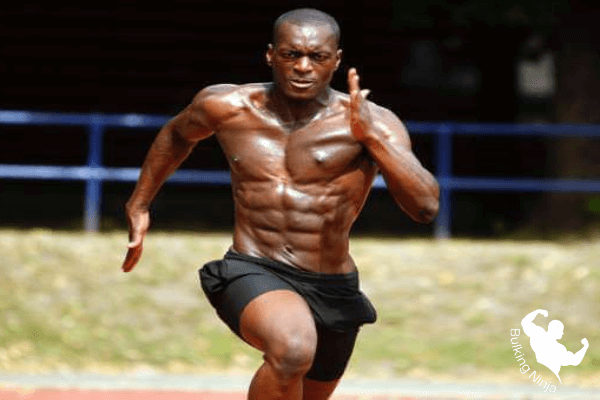When discussing the difference between sprinting, running, and jogging, it’s important to understand that these activities fall into distinct categories. Runners, who engage in aerobic exercise, and joggers are two types of individuals who partake in different forms of running.
Sprinting, on the other hand, stands apart from both jogging and running due to its high-intensity nature. To fully comprehend these distinctions, it is necessary to examine the activities themselves and the various aspects that set them apart.
Despite the occasional interchangeability of terms, runners and joggers possess unique characteristics and preferences, shaping their respective experiences. By exploring the nuances and examining these activities, we gain a comprehensive understanding of the difference between jogging running and sprinting.
Table of Contents
- What Is The Difference Between Jogging Running And Sprinting?
- Difference between Sprinting And Long Distance Running
- Is There A Difference Between Running And Jogging?
- Best Benefits of Jogging
- What Are The Benefits Of Running?
- What is the Benefits of Sprinting
- Comparing Sprinting, Running, and Jogging
- Which is Best for Weight Loss?
- Which is Best for Muscle Building and Strength?
- Which is Most Effective for Cardiovascular Fitness?
- Common Mistakes to Avoid
- Frequently Asked Questions
- Does running burn fat?
- Does running long distance help with sprinting?
- Are sprints better than long distance running?
- Is sprinting and running the same thing?
- Different between running and sprinting?
- Difference between sprinting and jogging?
- Why sprinting is better than jogging?
- Is running better than sprinting?
- Conclusion
What Is The Difference Between Jogging Running And Sprinting?

Sprinters, with their well-developed muscles, engage in high-intensity running activities. Running, jogging, and sprinting are distinguished by their varying paces and distances. During workout sessions, sprinters incorporate techniques like fartlek, tempo runs, and interval sessions to enhance their performance.
They focus on improving their running mechanics, such as biomechanics, kinesiology, and physiology, to optimize their aerobic and anaerobic exercise.
Gait differences are analyzed, and the American Journal of Sports Medicine provides valuable insights into the biomechanics of sprinting. The force, velocity, and power generated during sprinting propel runners forward at a faster rate.
Proper running posture, including an upright head and torso, relaxed arms, and bent elbows, contribute to momentum. Sprinters emphasize on the hip and knee flexion, dorsiflexion of the ankle, and efficient foot landing to achieve a longer stride length. The forefoot landing technique reduces the eccentric brake, resulting in improved speed and efficiency.
Sprinters benefit from the vocabulary and terminology used in the running community to communicate and understand the nuances of their sport. Overall, the key differences between sprinting, running, and jogging lie in the intensity, movement, mindset, and various biomechanical factors involved.
Difference between Sprinting And Long Distance Running
Sprinting and long-distance running differ in intensity and duration. Sprinting involves short bursts of maximum effort over a relatively short distance. It focuses on explosive speed, requiring high levels of power and anaerobic energy.
In contrast, long-distance running entails sustaining a steady pace over extended distances. It emphasizes endurance and aerobic energy, allowing runners to cover substantial distances. While sprinting is intense and brief, long-distance running is a more prolonged and endurance-based activity.
What Is Jogging Workout?

A jogging workout involves moving at a leisurely pace, with individuals taking spring steps and maintaining a comfortable trot. It is a form of aerobic exercise that utilizes oxygen as fuel, providing a healthy activity to enhance stamina and endurance.
Jogging is characterized by a visual perspective of bouncing movement, where strides, knee elevation, and arm swing contribute to a fluid and natural motion. With its casual approach, jogging allows individuals to push their boundaries at their own pace, promoting a positive mindset towards fitness. It is an excellent outlet for lifetime joggers to engage in a healthy activity, improve energy conservation, and maintain a leisurely pace.
Incorporating jogging into a training schedule contributes to overall well-being and a sense of achievement. By focusing on a leisurely pace and adopting a casual approach, jogging offers a healthy activity that promotes a positive mindset and allows individuals to connect with their bodies and enjoy the benefits of outdoor exercise.Read more about can you gain six peack with sit ups.
Is There A Difference Between Running And Jogging?
When it comes to differentiating between running and jogging, one crucial factor to consider is speed. While jogging is often seen as a slower version of running, experts define jogging as maintaining an average pace ranging from 4 to 6 miles per hour.
On the other hand, running is characterized by a faster pace that exceeds 6 mph or a pace quicker than a 10-minute mile. This distinction in speed sets running apart as a more intense and faster form of aerobic exercise compared to jogging.
However, both activities offer their own unique benefits and can be tailored to individual fitness goals and preferences.
Best Benefits of Jogging
Jogging offers a wide range of benefits that positively impact both physical and mental health.
Improve Cardiovascular , Regular jogging can help improve cardiovascular fitness, enhancing the overall functioning of the heart and circulatory system.
Jogging aids in weight management by burning calories and promoting a healthy body weight.
It stimulates the release of endorphins, which are natural mood enhancers boosters, leading to reduced stress levels and improved mental well-being.
Jogging is an effective way to relieve stress and clear the mind, providing a sense of relaxation and rejuvenation.
Enhanced Overall Fitness.
By decreasing risk factors linked to chronic diseases. the lower body (quadriceps, hamstrings, calves, glutes) and the core, leading to improved strength and endurance.
Maintain Healthy Bone Density ,It helps maintain healthy bone density, reducing the risk of osteoporosis.
Jogging Increases Lung Capacity and improves respiratory function, leading to better endurance during physical activities.
Improved Flexibility , Regular jogging sessions contribute to improved flexibility and joint mobility.
What Is Running As Exercise?

Running, as an exercise, is a dynamic form of physical activity that involves the act of moving or racing rapidly. It is a versatile activity that encompasses different intensities, such as jogging and sprinting, and serves as a valuable tool for improving cardiovascular fitness and overall physical well-being.
During running, the body’s movement consists of longer strides and quicker arm movements, resulting in an increased heart rate and greater oxygen intake. This combination of movement, effort, and increased energy expenditure contributes to the development of cardiovascular fitness and enhances overall physical endurance.
Runners often set time-specific goals and strive to achieve personal bests, providing a sense of motivation and accomplishment. From a physiological standpoint, running is performed in the aerobic zone, where oxygen serves as the primary source of fuel. This allows individuals to engage in running for longer distances, promoting endurance and stamina.
As a sport, running offers a wide range of benefits beyond cardiovascular fitness. It can be tailored to individual training needs, focusing on different speeds and intensities to target specific fitness goals. Whether it is for weight management, stress reduction, or overall physical well-being, running provides a holistic approach to exercise.
In short words, running encompasses various forms such as jogging and sprinting, and serves as a means to improve cardiovascular fitness, physical endurance, and overall health. It is a versatile activity that can be customized to individual goals and offers a range of positive benefits for both the body and mind.
What Are The Benefits Of Running?
Running provides numerous benefits for overall health and well-being, including improvements in cardiovascular capacity and VO2 Max.
Regular running increases endurance, allowing individuals to engage in physical activities for longer durations without fatigue.
Running enhances metabolism, leading to a higher caloric burn and potentially aiding in weight management.
Make sure to seek advice from a healthcare professional. diseases, such as hypertension and diabetes, running promotes better long-term health.
Improving cardiovascular capacity through running strengthens the heart and improves its efficiency.
Running increases VO2 Max, which refers to the maximum amount of oxygen a person can utilize during exercise, leading to improved respiratory and cardiovascular health.
Engaging in running can help individuals reduce their risk of developing chronic diseases by maintaining a healthy weight and improving overall fitness levels.
The higher caloric burn associated with running can contribute to weight loss or weight maintenance goals.
What Is Sprinting Exercise?

Sprinting exercise involves running at top speed for short distances, typically ranging from 100m to 800m, with the goal of maintaining full speed throughout the entire run.
The physiological difference between sprinting and regular running lies in the energy system used. In sprinting, you work in the anaerobic zone, relying on glycogen rather than oxygen as the primary source of energy.
This intense burst of speed leads to fatigue due to the accumulation of lactic acid, a byproduct of glycogen breakdown. Sprinting workouts are compiled of short, high-intensity intervals that challenge both the muscular and cardiovascular systems.
By pushing your body to its limits, sprinting exercise helps improve speed, build explosive power, and enhance overall fitness. It is a dynamic and exhilarating form of exercise that can be incorporated into training routines for athletes or anyone seeking to elevate their fitness level.
What is the Benefits of Sprinting
Sprinting offers a multitude of benefits that make it an exceptional form of exercise for individuals seeking to enhance their fitness level and overall well-being. Some of the key benefits of sprinting include:
Improved cardiovascular conditioning
Sprinting involves intense bursts of activity that elevate heart rate and challenge the cardiovascular system. Regular sprinting sessions can lead to increased cardiovascular endurance and overall conditioning.
Higher caloric burn
Sprinting is known for its high-intensity nature, resulting in a significant caloric burn. It can be an effective strategy for weight management and promoting calorie expenditure.
Increased muscular force and power
Sprinting requires a powerful muscular effort, particularly in the lower body. It can help develop explosive strength, improve muscular force production, and enhance power and speed.
Enhanced velocity and speed
Sprinting training can improve running speed and overall velocity, benefiting athletes and individuals participating in various sports or activities that require quick bursts of speed.
By incorporating sprinting into your fitness routine, you can experience these benefits and enjoy the exhilaration of pushing your limits and achieving new levels of physical performance. It is important to gradually introduce sprinting and ensure proper warm-up and technique to minimize the risk of injury and maximize the advantages of this dynamic exercise.
Comparing Sprinting, Running, and Jogging
When comparing sprinting, running, and jogging, it is essential to consider various factors such as cardiovascular exercise, intensity, duration, One’s fitness level, objectives, and personal choices.
These forms of exercise offer distinct benefits and contribute to overall fitness and health.
Sprinting is a high-intensity exercise that engages in cardiovascular health, endurance, and calorie consumption short bursts of maximum effort, making it an excellent choice for individuals seeking to improve speed, power, and anaerobic fitness.
Running falls in the middle range, providing a balance between intensity and endurance. It is suitable for individuals with varying fitness levels and goals, promoting Cardiovascular health, endurance, and calorie expenditure.
Jogging, on the other hand, is a low-impact form of exercise with a lower intensity and longer duration. It is ideal for beginners or those seeking a less strenuous option, contributing to cardiovascular health and overall fitness.
Each form of exercise offers its own unique benefits, and the choice depends on Personal preferences, fitness level, and specific objectives.
Whether you prioritize intensity, endurance, or low-impact workouts, incorporating sprinting, running, or jogging into your exercise routine can enhance your overall fitness and contribute to a healthier lifestyle. It is important to listen to your body, gradually progress, and tailor your exercise routine to align with your needs and preferences.
Which is Best for Weight Loss?

When it comes to losing weight, all three exercise forms exercise, sprinting, running, and jogging, can be beneficial in their own ways.
Sprinting, with its high-intensity nature and the afterburn effect, is effective for burning calories and boosting metabolism, making it a time-efficient option for fat loss. High-intensity interval training (HIIT), which can include sprinting, is particularly effective for increasing post-exercise calorie burn and promoting weight loss.
Running and jogging, whether at a moderate pace or for longer durations, contribute to weight loss by improving aerobic endurance and overall calorie expenditure. Both running and jogging provide opportunities for consistent exercise, allowing for increased overall calorie burn and gradual weight loss.
The choice between sprinting, running, and jogging for weight loss depends on individual preferences, fitness level, and the desired intensity of the workout.
Combining different forms of exercise, such as incorporating HIIT sessions or varying the intensity and duration of runs, can be an effective strategy for maximizing weight loss results.
It is important to select a form of exercise that you enjoy and can sustain in the long term. Additionally, maintaining a balanced diet and creating a calorie deficit through exercise and healthy eating habits are key factors in achieving weight loss objectives. Consultation with a healthcare professional, or fitness expert can provide personalized guidance and recommendations based on your specific needs and preferences.
Which is Best for Muscle Building and Strength?
Various forms of physical activity provide distinct advantages. when it comes to muscle building and strength development.
Sprinting engages fast-twitch Muscle fibers, promoting muscle development and increased power. especially in the lower body. It is an effective way to target specific muscle groups and enhance overall power and explosiveness.
Running and jogging, although less effective for muscle building compared to sprinting, can still contribute to maintaining muscle mass and improving muscle tone. They provide a moderate level of resistance and can be integrated into a well-rounded fitness routine.
Resistance training, such as weightlifting or bodyweight exercises, is an excellent approach to enhance muscle building and strength. It offers progressive overload and targeted muscle activation, leading to significant gains in muscle mass and overall strength.
Incorporating resistance training into your fitness routine is highly recommended to maximize muscle building and strength development. It allows for specific muscle targeting, progressive overload, and the opportunity to challenge muscles beyond what running or jogging can offer alone.
Which is Most Effective for Cardiovascular Fitness?
Jogging, running, and sprinting offer distinct differences in their impact on cardiovascular fitness and overall physical performance:
Jogging is a moderate-intensity exercise that improves cardiovascular fitness by gradually increasing heart rate, lung capacity, and overall endurance. It provides a foundation for building a solid cardiovascular base.
Running, which includes a range of intensities, helps further improve cardiovascular fitness by challenging the heart rate, increasing lung capacity, and pushing the limits of VO2 Max. It allows for steady progress and enhanced endurance.
Sprinting, with its high-intensity bursts of activity, focuses more on anaerobic fitness, developing explosive power and speed. It engages fast-twitch muscle fibers, enabling individuals to reach their maximum potential in short bursts.
Interval training, a combination of jogging, running, and sprinting, can provide a comprehensive approach to cardiovascular fitness. By alternating between different intensities, it maximizes benefits by improving endurance, boosting heart rate, and enhancing overall performance.
By incorporating a combination of jogging, running, and sprinting into an exercise routine, individuals can enjoy comprehensive cardiovascular fitness benefits. This approach helps improve heart health, increase lung capacity, enhance VO2 Max, develop explosive power, and boost overall speed and endurance. Tailoring the intensity and duration of each activity to individual fitness levels and goals ensures a well-rounded and effective fitness regimen.
Common Mistakes to Avoid
To fully grasp the difference between sprinting, running, and jogging, it is crucial to understand the associated benefits, potential mistakes, and key factors that contribute to optimal performance:
Sprinting, running, and jogging all offer unique benefits, including improved cardiovascular fitness, increased endurance, and enhanced overall performance.
Mistakes such as overtraining can hinder progress and lead to injuries, while incorporating rest days and active recovery into your routine can prevent overtraining and promote better results.
Wearing proper footwear, Wearing suitable footwear, such as running shoes that provide stability, support, and shock absorption, is essential to minimize the risk of injury and optimize overall performance.
Proper form and technique play a crucial role in preventing injuries and maximizing efficiency while sprinting, running, and jogging. Seek advice from professionals or utilize online resources to ensure correct execution and prevent any setbacks.
By maximizing the benefits, avoiding typical mistake, and paying attention to correct technique and technique, individuals can prevent injuries, increase efficiency, and make significant progress in their sprinting, running, or jogging endeavors. Whether seeking guidance from professionals or utilizing online resources, the combination of knowledge, execution, and dedication will contribute to a positive and rewarding exercise experience.
Frequently Asked Questions
Does running burn fat?
Yes, running is an effective fat burning exercise that helps in losing weight. According to data from the American According to the Council on Exercise, an individual weighing 180 pounds burns 170 calories when running for 10 minutes at a steady pace.
Does running long distance help with sprinting?
Yes, running long distance can help with sprinting.
Are sprints better than long distance running?
It depends on the specific goals and preferences. Both sprints and long distance running offer unique benefits.
Is sprinting and running the same thing?
No, sprinting and running are not the same thing. Sprinting refers to running at maximum speed for short distances, while running encompasses a broader range of speeds and distances.
Different between running and sprinting?
Running is a broader term that includes various speeds and distances, while sprinting refers to running at maximum speed for short distances.
Difference between sprinting and jogging?
Sprinting entails running at maximum velocity for short distances, while jogging is a slower, more relaxed form of running.
Why sprinting is better than jogging?
Sprinting is better than jogging for developing explosive power, speed, and anaerobic fitness.
Is running better than sprinting?
The effectiveness of running versus sprinting depends on individual goals and personal preferences. Both have their distinct advantages.
Conclusion
Jogging, running, and sprinting are different forms of physical activity that can be performed interchangeably based on individual goals and preferences. Healthcare professionals often recommend engaging in at least 30 minutes of exercise per day to improve fitness and overall well-being.
Each of these activities offers unique benefits such as cardiovascular endurance, increased speed, and improved overall fitness. The choice between jogging, running, or sprinting depends on personal preferences, desired fitness outcomes, and individual goals. The key is to keep moving and stay active to maintain a healthy body and enjoy the subjective experience of motion.














